Estimated reading time: 18 minutes
Key Takeaways
- Gothenburg blends a rich maritime heritage with modern urban culture, offering visitors a perfect mix of historical charm and contemporary experiences.
- Haga, Gothenburg’s oldest neighborhood, features cobblestone streets, wooden houses, and the famous Hagabullen cinnamon buns at Café Husaren.
- Liseberg Amusement Park is Scandinavia’s largest, featuring thrilling rides and seasonal events like Halloween festivals and Christmas markets.
- The Gothenburg archipelago offers stunning natural landscapes accessible by public ferries, with islands like Marstrand perfect for day trips.
- Gothenburg’s art scene is vibrant, with the Gothenburg Museum of Art housing an impressive collection of Nordic and international masterpieces.
Table of Contents
- Introduction
- Overview of Gothenburg
- Exploring Haga
- Liseberg Amusement Park
- Gothenburg Archipelago Guide
- Culture and Art in Gothenburg
- Practical Travel Tips
- Frequently Asked Questions about Gothenburg
- Conclusion
Introduction
Welcome to Gothenburg, Sweden’s captivating west coast destination that perfectly balances maritime heritage with forward-thinking innovation. This Gothenburg Sweden travel guide introduces you to a city where historic charm meets modern urban culture in the most delightful ways. Located on Sweden’s scenic western shoreline, Gothenburg welcomes travelers with its relaxed atmosphere, stunning waterfront views, and wealth of cultural attractions. [SOURCE]
The city’s unique blend of old-world architecture and contemporary design creates an inviting atmosphere for visitors of all interests. From the charming cobblestone streets of its historic districts to its cutting-edge museums and lively cultural scene, Gothenburg offers an authentic Swedish experience that differs from its more formal eastern counterpart, Stockholm. [SOURCE]
Want to see this for yourself? Click here to jump to the video in UHD 4K Resolution.
Overview of Gothenburg
Gothenburg boasts a rich historical tapestry dating back to its founding by King Gustavus Adolphus II in 1621. Initially established as a trading colony, the city quickly grew into a vital shipbuilding hub that shaped both its physical landscape and cultural identity. This maritime legacy remains visible throughout the city today, from the historic harbor to the various nautical museums that tell the story of Gothenburg’s seafaring past. [SOURCE]
The city’s iconic waterfront is defined by the majestic Göta River, Stora Hamnkanalen, and the Vallgraven canal system, creating a distinctive city layout that invites exploration. Along these waterways, visitors can discover historic ships, scenic promenades, and bustling marketplaces that showcase the city’s connection to the sea. [SOURCE]
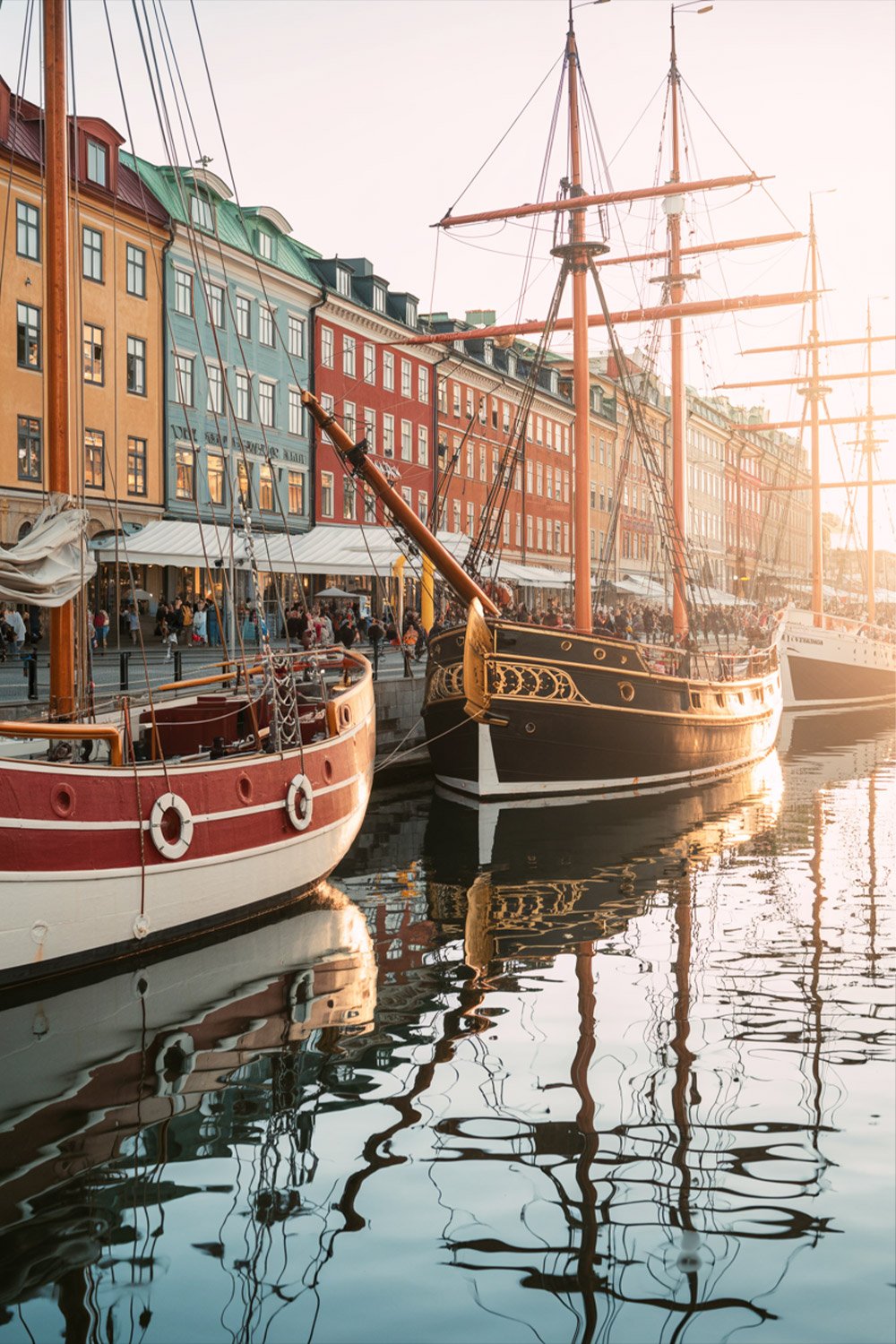
What truly sets Gothenburg apart is its thriving arts scene and relaxed atmosphere. Home to a large student population and known for its welcoming locals, the city offers a less formal and more affordable experience than Stockholm. This laid-back vibe combines with a genuine commitment to sustainability and innovation, creating a uniquely Gothenburg character that visitors find instantly appealing. A visit to Stockholm and Gothenburg provides an interesting contrast of Sweden’s diverse city cultures. [SOURCE]
Exploring Haga District: Things to Do in Gothenburg’s Old Town
When it comes to things to do in Haga Gothenburg, this charming district offers a delightful step back in time. As Gothenburg’s oldest neighborhood, Haga was originally established in the 17th century to house shipyard workers before gradually evolving into a bohemian enclave with distinctive character. Today, it stands as one of the city’s most beloved attractions, drawing visitors with its preserved historical charm. [SOURCE]
The district is characterized by its picturesque cobblestone streets and distinctive two-story wooden houses that date back to the 19th century. These well-preserved structures, with their inviting facades and cozy courtyards, create a uniquely atmospheric setting that feels worlds away from the modern city center. [SOURCE]
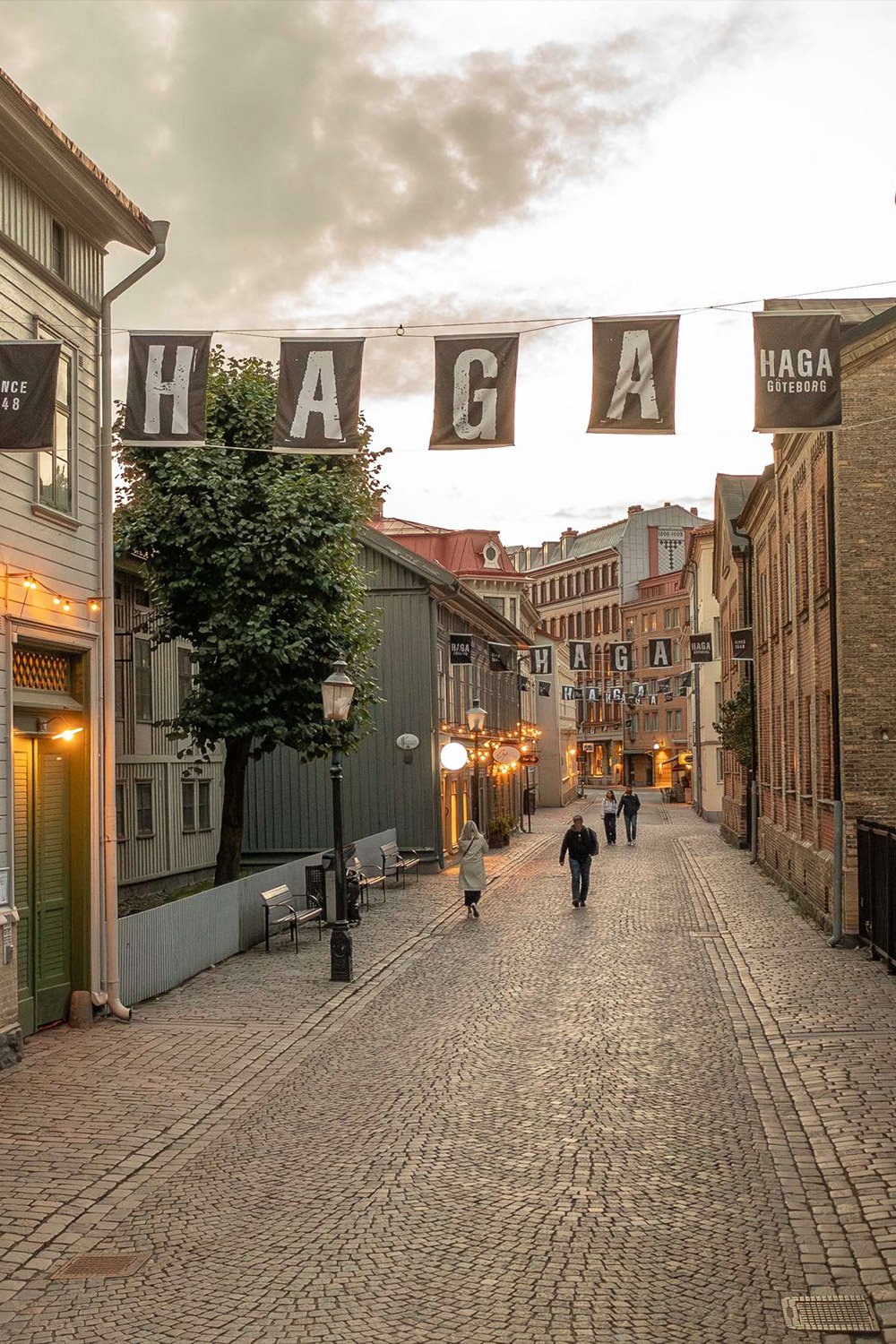
The main pedestrian thoroughfare, Haga Nygata, serves as the neighborhood’s vibrant heart. This charming street is lined with an eclectic mix of boutique shops selling handcrafted items, vintage stores filled with unique treasures, and inviting local cafés that beckon with the aroma of freshly brewed coffee and baked goods. The most famous of these establishments is Café Husaren, renowned for its giant cinnamon buns called Hagabullen—a must-try local specialty that has become synonymous with the Haga experience. [SOURCE]
Insider Tips for Enjoying Haga
- Take a leisurely stroll through the neighborhood in the morning hours to admire the restored architecture and soak in the friendly ambiance before the crowds arrive.
- Make time for fika, the traditional Swedish coffee break, at one of the iconic cafés. This beloved cultural practice is perfectly experienced in Haga’s cozy establishments.
- Climb up to Skansen Kronan, the 17th-century fortress that sits atop a hill overlooking Haga. The climb rewards visitors with panoramic views of the city and provides a fascinating glimpse into Gothenburg’s defensive history.
- Visit on weekdays if possible to experience a more authentic, less crowded atmosphere when exploring the local shops and cafés.
Haga’s charm extends beyond its physical beauty to include the warm community feeling that pervades its streets. The neighborhood manages to maintain its authentic character while welcoming visitors, making it a highlight of any trip to Gothenburg and a perfect introduction to Swedish culture. Similar historical districts can be found in Bergen, Norway, though each has its own unique character.
Liseberg Amusement Park Tips: Rides, Events, and Family Guide
When planning your Gothenburg adventure, essential Liseberg amusement park tips will help you make the most of Scandinavia’s largest amusement park. Established in 1923, Liseberg has evolved into one of Gothenburg’s most iconic attractions, drawing over three million visitors annually with its blend of thrilling rides, beautiful gardens, and festive events. [SOURCE]
Best Rides and Attractions in Gothenburg Liseberg Amusement Park
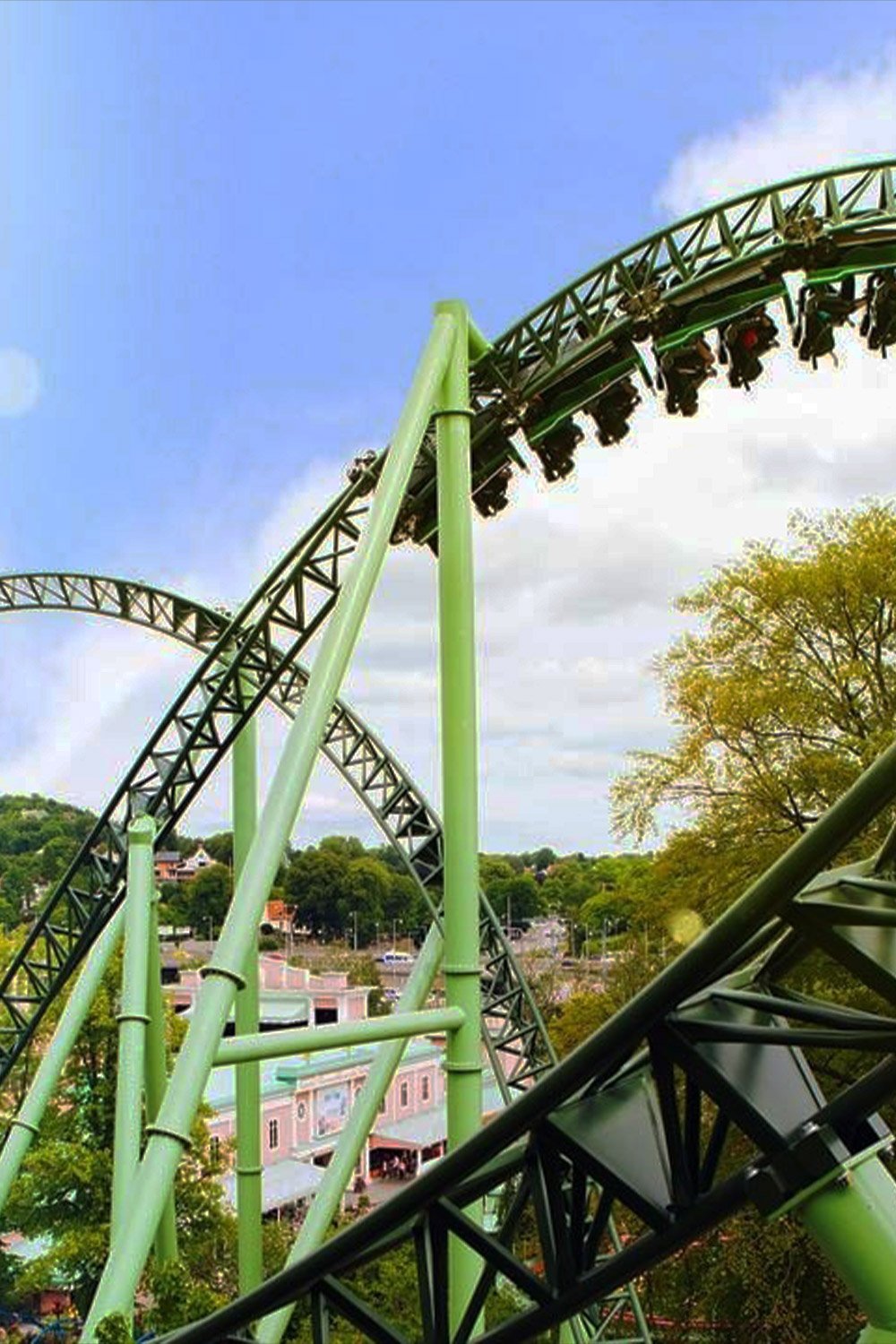
- Helix: A world-class roller coaster with multiple inversions and high-speed twists that provide an adrenaline rush for thrill-seekers.
- Balder: An award-winning wooden roller coaster known for its smooth ride and impressive drops.
- AtmosFear: A free-fall tower that drops riders from a height of 116 meters, offering both thrills and spectacular views of the city.
- Liseberg Wheel: A giant Ferris wheel providing panoramic views of Gothenburg, perfect for those seeking a more relaxed experience.
- Rabbit Land: A dedicated area with gentle rides and playful attractions designed specifically for younger children.
The park truly comes alive during its seasonal events, each offering a unique atmosphere and special activities. The Halloween festival transforms Liseberg into a spooky wonderland with haunted houses and themed decorations. The Christmas market is equally impressive, featuring millions of twinkling lights, traditional crafts, seasonal foods, and a magical winter atmosphere that captures the spirit of Swedish holiday traditions. Throughout the year, the park also hosts concerts and performances by both local and international artists. [SOURCE]
Practical Advice for Families
- Admission options: As of recent data, entrance tickets cost approximately 95 SEK, while unlimited ride passes are available for around 255 SEK. Consider your interests and plan accordingly.
- Timing your visit: Arrive early in the day or plan a weekday visit to avoid the largest crowds, especially during summer months and holiday periods.
- Dining options: The park features numerous restaurants and food stalls offering everything from traditional Swedish dishes to international cuisine, making it easy to plan family meals without leaving the park.
- Height restrictions: Check ride requirements in advance if traveling with children to avoid disappointment. The park website provides detailed information about height restrictions for each attraction.
- Park layout: Upon arrival, take a few minutes to familiarize yourself with the park map and plan a route that minimizes walking time between your chosen attractions.
With its unique combination of thrilling rides, beautiful landscaping, and authentic Swedish charm, Liseberg offers an experience that goes beyond the typical amusement park visit. The well-maintained grounds and attention to detail create an atmosphere that appeals to visitors of all ages, making it a must-visit destination in Gothenburg. Norway also offers excellent theme parks which you can explore in our Norway travel destinations guide.
Gothenburg Archipelago Guide: Islands, Ferries, and Day Trips
The Gothenburg archipelago guide introduces you to one of Sweden’s most captivating natural treasures. Just a short journey from the city center lies a stunning collection of islands that showcase the raw beauty of Sweden’s west coast. This archipelago consists of both northern and southern island groups, each with its own distinct character and charm. [SOURCE]
Transport Options
Accessing the archipelago is straightforward with several convenient options:
- Public ferries: The most economical choice, these depart regularly from Saltholmen or Stenpiren terminals. What makes this option particularly attractive is that ferry tickets are included with Gothenburg’s public transport passes, making island-hopping both easy and affordable.
- Guided boat tours: Companies like Strömma Turism offer structured tours with informative commentary, ideal for first-time visitors who want to learn about the history and ecology of the islands.
- Water taxis: For those seeking more flexibility in their island exploration, private water taxis provide custom schedules and routes, though at a premium price.
Activities in the Archipelago
The islands offer diverse experiences for all interests:
- Scenic walks through charming fishing villages, along rocky coastlines, and across heather-covered landscapes provide opportunities to connect with nature and capture stunning photographs.
- Seaside cafés dot the islands, serving traditional Swedish lunches, coffee, and pastries with unparalleled ocean views. Many feature fresh seafood caught in the surrounding waters.
- Nature exploration opportunities abound, from birdwatching to swimming in secluded coves. The clean, clear waters and diverse ecosystems make the archipelago a haven for nature enthusiasts.
- Kayaking between islands offers an intimate way to experience the archipelago’s beauty from a unique perspective, with rental services available on several islands.
Notable Islands for Day Trips
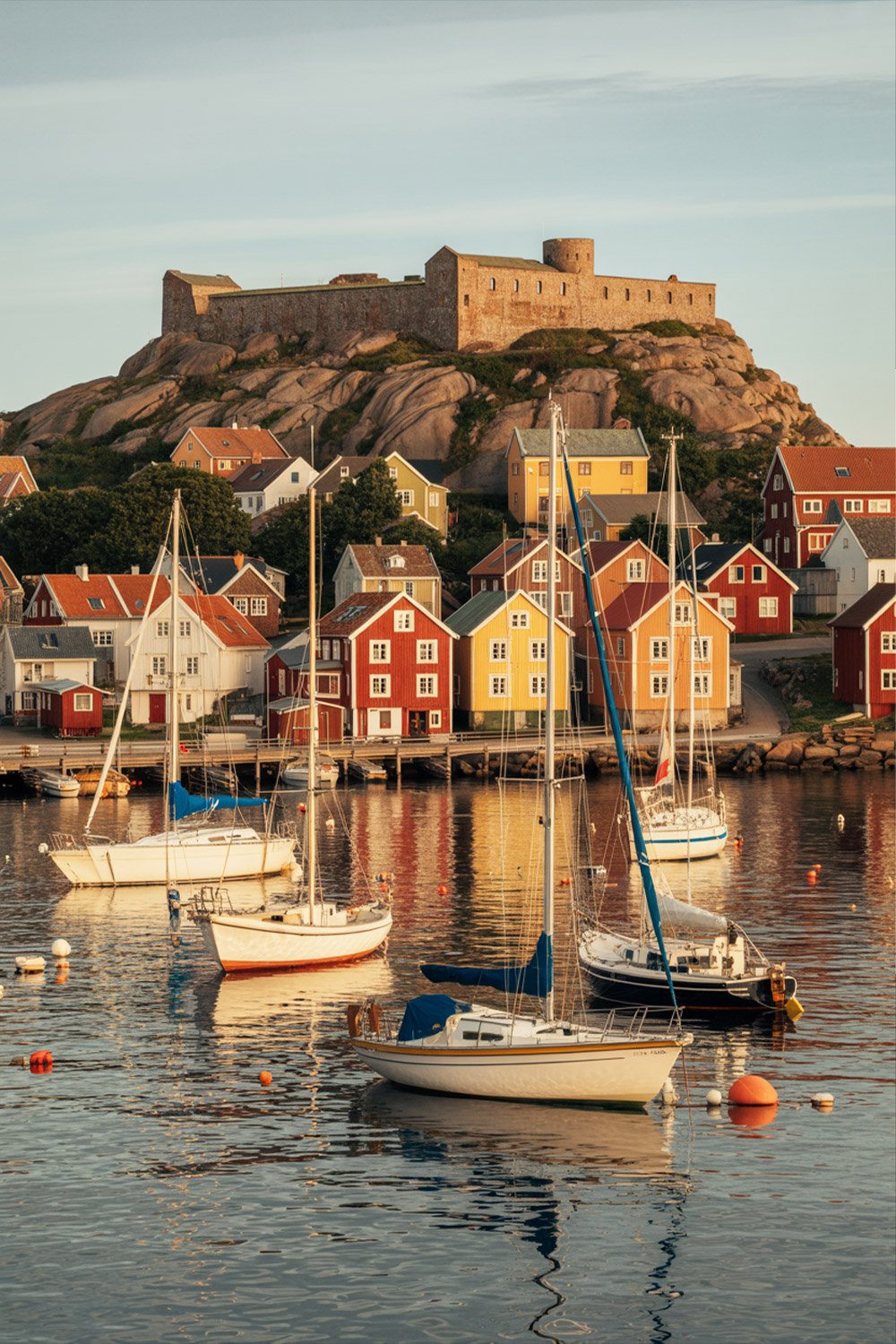
- Marstrand: Perhaps the most famous island, Marstrand boasts the impressive Carlsten Fortress, charming streets lined with colorful wooden houses, and a vibrant sailing culture that attracts enthusiasts from around the world.
- Dyrön: A car-free island offering tranquil hiking trails and spectacular viewpoints, perfect for those seeking a peaceful retreat from urban life.
- Åstol: This tiny, picturesque island is known for its tightly clustered red houses and excellent seafood restaurant that serves the day’s fresh catch with stunning sunset views.
- Brännö: Famous for inspiring the classic Swedish summer song “Dansen på Brännö,” this island offers lovely walking paths and a glimpse into traditional archipelago life.
The Gothenburg archipelago provides a refreshing contrast to city life, allowing visitors to experience the natural beauty and maritime traditions that have shaped this region for centuries. Whether you visit for a few hours or spend several days island-hopping, the archipelago offers some of Sweden’s most memorable landscapes and authentic coastal experiences. The experience shares similarities with the stunning coastal areas featured in our Scandinavia fjords documentary. [SOURCE]
Culture and Art in Gothenburg: Museums, Galleries, and Exhibitions
The Gothenburg Museum of Art collection stands as a testament to the city’s vibrant cultural scene. Housed in a distinguished building at Götaplatsen, the city’s cultural hub, this world-class institution has been gathering and displaying exceptional artwork since its establishment in 1861. [SOURCE]
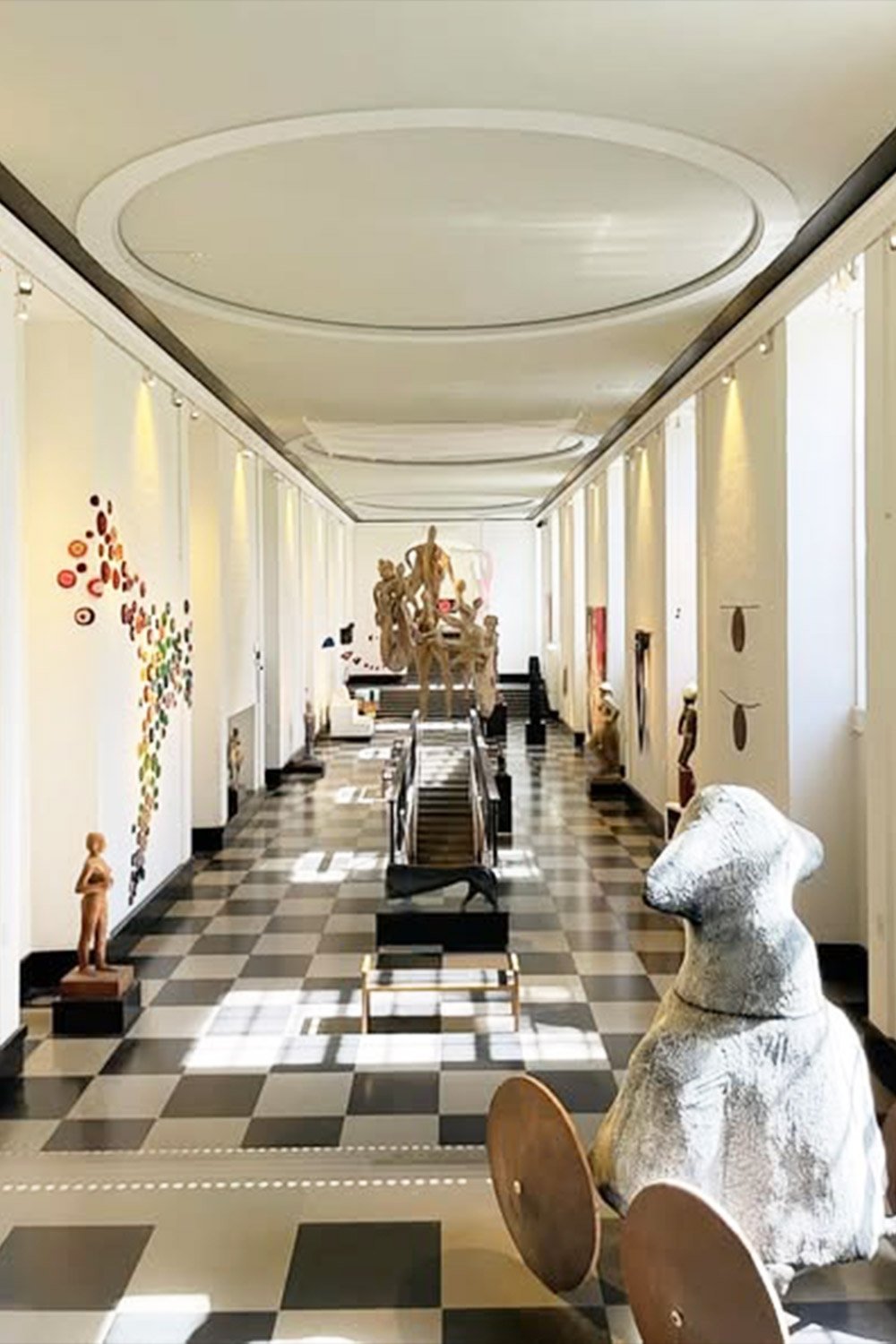
Notable Exhibitions and Collections
The museum’s diverse holdings span multiple periods and artistic movements:
- The Nordic Collection features masterpieces by Scandinavian artists including Carl Larsson, Bruno Liljefors, and Edvard Munch, providing insight into the region’s distinctive artistic heritage and natural landscapes.
- The Fürstenberg Gallery houses an impressive collection of late 19th-century art donated by prominent Gothenburg merchant Pontus Fürstenberg and his wife, showcasing works by Swedish and French artists from this pivotal period.
- International Masters are well-represented with works by Rembrandt, Monet, Picasso, and van Gogh, placing Gothenburg’s collection among the most significant in Northern Europe.
- Contemporary Art exhibitions rotate regularly, featuring both established and emerging artists who push boundaries and engage with current social and cultural themes.
Why Visit the Museum
The Gothenburg Museum of Art offers more than just an impressive collection; it provides a comprehensive cultural experience:
- The museum’s architectural design itself is noteworthy, with spacious galleries that allow artworks to be displayed in optimal settings with natural light enhancing the viewing experience.
- Its strategic location at Götaplatsen places it at the heart of Gothenburg’s cultural district, alongside the Concert Hall, City Theatre, and City Library, making it easy to incorporate into a broader cultural itinerary.
- The museum’s commitment to education is evident through its detailed informational displays, which provide context and background that enhance appreciation of the works on display, even for visitors with limited art knowledge.
- The rotating exhibitions ensure that even repeat visitors will discover something new, with curators skillfully balancing traditional favorites with fresh perspectives and contemporary voices.
Gothenburg Guided Tours and Visitor Experience
To maximize your experience at the museum:
- Expert-led tours are available in multiple languages, offering insights into both prominent masterpieces and lesser-known gems within the collection. These tours provide valuable historical context and artistic analysis.
- The museum’s digital guides allow visitors to explore at their own pace while still benefiting from curatorial expertise and background information.
- The museum café offers a pleasant setting to reflect on the artwork while enjoying Swedish pastries and coffee, extending the cultural experience.
- Special events including artist talks, workshops, and evening viewings regularly complement the permanent collection, providing opportunities for deeper engagement with the art.
Beyond the Museum of Art, Gothenburg’s cultural landscape includes numerous galleries, performance venues, and creative spaces that reflect the city’s commitment to artistic expression and innovation. The Röda Sten Konsthall, housed in an old boiler house beneath the Älvsborg Bridge, has become a center for contemporary art and experimental exhibitions, while the city’s street art scene adds vibrant color to urban spaces throughout Gothenburg.
Practical Travel Tips
Best Times to Visit Gothenburg
Timing your visit to Gothenburg can significantly impact your experience:
- Summer (June-August) offers the most pleasant weather with average temperatures between 15-22°C (59-72°F). This is the ideal season for outdoor activities, archipelago trips, and enjoying the city’s numerous parks and gardens. The extended daylight hours, with sunset sometimes as late as 10:30 PM, provide ample time for exploration. [SOURCE]
- Spring (April-May) and Fall (September-October) bring fewer tourists and moderate temperatures, perfect for city sightseeing without the summer crowds. Spring features blooming gardens while fall showcases beautiful autumn colors in the city’s parks.
- Winter (November-March) has shorter days and cooler temperatures, but compensates with festive Christmas markets, particularly at Liseberg, where millions of lights create a magical atmosphere. Indoor attractions like museums and galleries provide warm refuges during the colder months.
Transportation Options
Getting around Gothenburg is straightforward thanks to its efficient public transportation system:

- Trams form the backbone of Gothenburg’s public transport, with a comprehensive network covering most attractions. The historic blue trams have become symbols of the city and offer an authentic local experience.
- Buses complement the tram network, reaching areas not served by rail lines. Both trams and buses are covered by the same ticketing system, making transfers seamless.
- Ferries connect the mainland with the archipelago islands, with most routes departing from Saltholmen terminal. These are included in the city’s public transport passes, offering excellent value for island exploration. [SOURCE]
- Bike rentals are widely available through services like Styr & Ställ, Gothenburg’s bike-sharing program. The city’s flat terrain and extensive cycling infrastructure make biking a practical and enjoyable option for visitors.
Recommended Accommodations
Gothenburg offers lodging options for all budgets and preferences:
- Luxury: The Clarion Hotel Post, housed in the former central post office building, combines historic architecture with modern amenities and a central location.
- Mid-range: Clarion The Pier offers comfortable rooms in a waterfront setting with easy access to the city center and main attractions. [SOURCE]
- Budget: Linnéplatsens Hotel & Hostel provides affordable accommodations in the trendy Linnéstaden district, with both private rooms and dormitory options. [SOURCE]
- Unique: For a distinctive experience, consider Hotel Barken Viking, a converted sailing ship moored in the harbor that offers nautical-themed rooms reflecting Gothenburg’s maritime heritage.
Dining Highlights
Gothenburg’s food scene reflects both its coastal location and innovative spirit:

- Seafood: As a coastal city, Gothenburg excels in fresh seafood. Fiskekyrkan (The Fish Church) houses several excellent seafood restaurants in a distinctive church-like building from the 1870s.
- Coffee culture: Alkemisten Kaffe Bar represents Gothenburg’s thriving coffee scene, serving expertly crafted beverages in a cozy setting that’s perfect for experiencing Swedish fika. [SOURCE]
- Casual dining: Hasselsson’s Macklucka has gained popularity for its creative sandwiches and relaxed atmosphere, offering quality food at reasonable prices. [SOURCE]
- Market halls: Saluhallen food market provides a taste of local cuisine with numerous vendors selling everything from traditional Swedish dishes to international specialties, perfect for sampling diverse flavors. [SOURCE]
While in Scandinavia, many travelers combine their Gothenburg visit with trips to nearby destinations like Stavanger or take fjord tours in Norway to experience the region’s diverse landscapes.
Frequently Asked Questions about Gothenburg Sweden
What is the best time of year to visit Gothenburg Sweden?
The best time to visit Gothenburg Sweden is during summer (June to August), when the weather is mild and daylight hours are long, perfect for exploring the Gothenburg archipelago, city parks, and waterfront areas. Spring and autumn offer fewer crowds, with blooming gardens or colorful fall foliage. Winter, while colder, is ideal for visiting Christmas markets at Liseberg and enjoying Gothenburg’s indoor museums and cultural venues.
How do I get around Gothenburg and the archipelago?
Gothenburg has a reliable public transport system of trams, buses, and ferries, all covered by one ticket. The iconic blue trams connect most neighborhoods, while ferries make day trips to nearby islands easy. Bike rentals through Styr & Ställ are popular thanks to the city’s flat terrain and cycling paths. For archipelago trips, ferries from Saltholmen and Stenpiren are included in transport passes, making it affordable to combine city sightseeing with coastal exploration.
What are the top attractions to see in Gothenburg?
Highlights of Gothenburg include Haga District, with its cobblestone streets and wooden houses, Liseberg Amusement Park with thrilling rides and seasonal events, and the Gothenburg Museum of Art collection at Götaplatsen. Outdoor enthusiasts can enjoy the Gothenburg archipelago, while the city center offers canals, markets, and historic ship displays that reflect Gothenburg’s maritime heritage.
Is Gothenburg Sweden expensive for travelers?
Compared to Stockholm, Gothenburg is generally more budget-friendly. Public transport passes cover trams, buses, and ferries at reasonable rates. Travelers can save money by eating at food markets such as Saluhallen or choosing guesthouses and hostels. While attractions like Liseberg require entry tickets, many experiences—including walking tours, canal views, and cultural neighborhoods—are free to enjoy.
Can you visit the Gothenburg archipelago on a day trip?
Yes, the Gothenburg archipelago islands are perfect for day trips. Public ferries run frequently and are included in city transport passes. Popular destinations like Marstrand, Brännö, and Dyrön are reachable in under an hour, offering hiking trails, fishing villages, and scenic coastlines. Guided boat tours and kayak rentals are also available for travelers wanting a deeper archipelago experience.
Conclusion
This Gothenburg Sweden travel guide has highlighted how the city blends maritime history, cultural landmarks, and natural landscapes into one accessible destination. From the historic charm of Haga District to the thrill of Liseberg Amusement Park and the peaceful beauty of the archipelago islands, Gothenburg offers variety for both cultural travelers and outdoor enthusiasts.
What makes Gothenburg stand out is its balance of affordability and authenticity. The city’s efficient transport system, walkable neighborhoods, and seasonal attractions allow visitors to plan rewarding trips without the higher costs often associated with Sweden’s capital. Its laid-back character and emphasis on sustainability make it an easy and enjoyable city to explore at any pace.
Whether you’re interested in art at the Gothenburg Museum of Art, cycling along canals, or taking a ferry out to the islands, Gothenburg provides memorable experiences year-round. Summer brings long days ideal for sightseeing, while winter creates a festive atmosphere with markets and cozy cafés for fika.
As you design your Scandinavian itinerary, consider combining Gothenburg with nearby west coast destinations or Norway’s fjord region for a broader perspective of Nordic culture and landscapes. For more inspiration on Scandinavian travel, explore our detailed Norway travel guides and discover how Gothenburg fits into a wider regional journey.
We hope this guide inspires you to discover Gothenburg’s unique blend of historical charm, natural beauty, and urban sophistication. Start planning your visit today, and prepare to be captivated by one of Scandinavia’s most appealing destinations. For more stunning Scandinavian travel experiences, visit Pathfinders Travel on YouTube to watch our Wonders of the World Travel Documentaries in 4K resolution.


